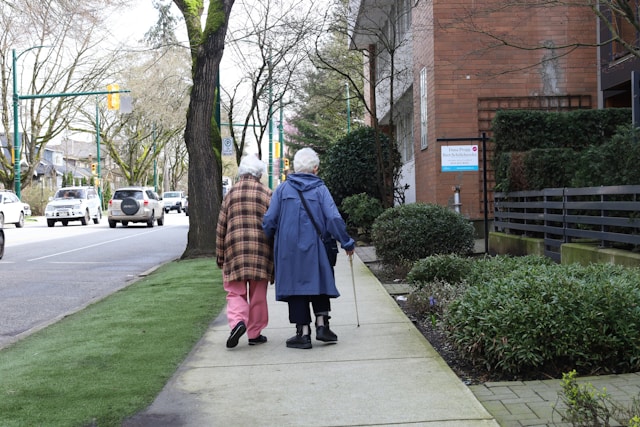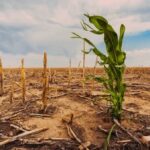
The 21st century has brought with it one of the most transformative demographic shifts in human history: global population aging. For the first time, the number of people aged 60 and above is growing faster than any other age group. According to the United Nations, the global population of older adults is projected to reach 2.1 billion by 2050, more than doubling from 2020 figures. This trend poses both challenges and opportunities for healthcare systems, social policies, and communities worldwide.
The Drivers of Global Aging
Several key factors are fueling the aging of the world’s population. These include lower fertility rates, improvements in public health, advances in medical care, and rising life expectancy. In many high-income countries, fertility rates have fallen below replacement levels, while in low- and middle-income countries (LMICs), a rapid decline in fertility is now catching up with increasing longevity. For example, countries like China, Brazil, and India are experiencing accelerated aging without necessarily having the infrastructure to support this demographic change.
Health Implications of Aging
While longer life is a sign of progress, it does not always mean healthier years. Older adults are more vulnerable to non-communicable diseases (NCDs) such as heart disease, diabetes, stroke, and cancer. Multimorbidity—the presence of multiple chronic conditions—is increasingly common among individuals over 65. Moreover, cognitive decline and neurodegenerative diseases such as Alzheimer’s are rising concerns, especially in societies where the oldest-old (those aged 80 and over) are growing rapidly.
The burden of NCDs among the elderly also puts pressure on healthcare systems. Countries with aging populations must allocate more resources to long-term care, hospital infrastructure, and trained geriatric professionals. Unfortunately, geriatric care is underdeveloped in many LMICs, where the aging population is growing the fastest.
Lifestyle Transitions in Later Life
The lifestyle of older adults is influenced by a variety of factors, including income, culture, urbanization, and social support. In wealthier nations, older people are increasingly adopting healthier habits, such as improved diets, regular exercise, and tobacco cessation. Programs promoting “active aging” have gained popularity, emphasizing physical, mental, and social engagement well into old age.
However, lifestyle changes are not uniformly positive. In some settings, urbanization has led to increased isolation among older adults, especially those living alone or in remote areas. Access to healthy food, walkable communities, and healthcare services can be limited for seniors in both urban slums and rural regions.
Nutrition remains a particularly important issue. Malnutrition, both undernutrition and obesity, affects many elderly individuals. Aging often brings about physiological changes—such as reduced appetite and impaired absorption—that contribute to nutritional deficiencies. At the same time, sedentary lifestyles and access to processed food can lead to obesity and related health conditions.
Mental Health and Social Well-Being
Mental health is a critical yet often overlooked component of older adults’ well-being. Depression and anxiety are prevalent among seniors, often triggered by loneliness, loss of loved ones, or declining physical health. Suicide rates among older adults are also concerning in many parts of the world.
Social determinants play a major role in elderly mental health. Research consistently shows that older adults who maintain strong social connections and engage in community activities experience better mental and physical health outcomes. Intergenerational living, community-based programs, and senior volunteer initiatives can help mitigate social isolation.
Technological Innovations and Aging
Technology is increasingly shaping the health and lifestyle of older adults. Telemedicine, wearable health trackers, and mobile health apps allow seniors to monitor their health from home, reducing the need for hospital visits. Smart home technology—such as fall detection systems and automated medication reminders—can support independent living.
However, the digital divide remains a challenge. Many older adults lack digital literacy or access to reliable internet services. Bridging this gap is essential for inclusive aging strategies that leverage technology without leaving the most vulnerable behind.
Global Policy Responses

Recognizing the implications of aging populations, global institutions are calling for policy reforms and innovation. The World Health Organization (WHO) has declared 2021–2030 the “Decade of Healthy Ageing,” urging countries to invest in age-friendly environments, integrated care, and long-term support systems.
Some countries are leading the way. Japan, with the world’s oldest population, has implemented comprehensive aging policies that include pension reform, elder employment initiatives, and investments in robotic care technology. Scandinavian countries have adopted universal long-term care models that provide equitable access to services for older adults.
Yet, many countries are unprepared. A 2023 report by the Global Coalition on Aging revealed that less than 25% of nations have a coordinated national strategy for aging. As time progresses, the window for proactive planning narrows.
The Future of Aging: A Call for Equity
As the world continues to age, equity must remain at the heart of the conversation. Older adults are not a homogeneous group. Disparities in health outcomes among elderly populations are shaped by gender, ethnicity, geography, and socio-economic status. Women, for example, live longer on average but often face greater financial insecurity and health issues in later life.
Therefore, a one-size-fits-all approach will not suffice. Culturally sensitive, locally adapted strategies are essential. Community health workers, family-based care models, and policies that empower older adults as active contributors—not just recipients—of care will be crucial.
Conclusion
Global aging is not a distant phenomenon—it is already reshaping economies, health systems, and communities. While the challenges are significant, so are the opportunities. With the right investments in healthcare, social infrastructure, and inclusive policy, older adults can lead healthier, more fulfilling lives well into their later years. Aging is not a crisis; it is a triumph of human development. But to sustain that triumph, we must ensure that it includes dignity, equity, and well-being for all.
Last modified: May 6, 2025

